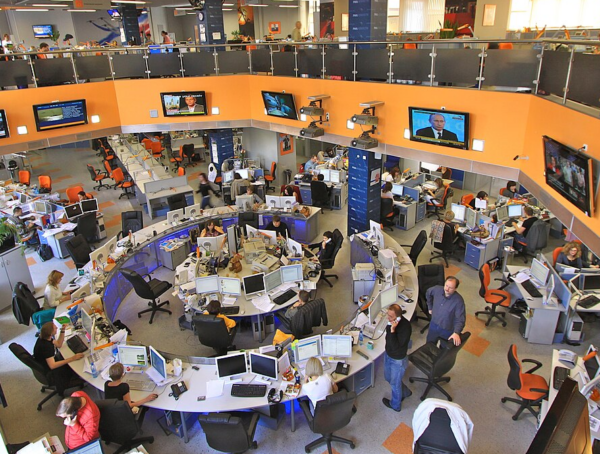Ninety percent of local news organizations in the nation’s biggest markets have mobile apps, so why aren’t they making the most of them?
Mobile devices are enabled with a global positioning system that works with wireless networks and cell phone triangulation to identify the location of the mobile device and provide the users information based on what they need. Using this technology, news organizations also offer users news near them, a trend known as geolocation of news.
Amy Schmitz Weiss, associate professor in the School of Journalism and Media Studies at San Diego State University, examined which news organizations are using geolocated news and the type of content is being geolocated.
The researcher examined the mobile apps of 173 news organizations in the United States. A content analysis was also conducted of mobile news apps from the network affiliates of all four networks (ABC, NBC, CBS, FOX) from the top 25 large-market television stations, the top 25 newspapers in the country by circulation, the top 25 digital-only news organizations and the top 25 news radio stations.
Of 173 news organizations, 156 had a mobile app. Around 47 percent of the news organizations had location-based services. No digital-only news organization had location-based services in its apps. Around 62 percent of television news stations had location-based services enabled in comparison with 40 percent of newspapers and 16 percent of news radio stations.
Local television news stations were geolocating mostly traffic and weather in their mobile apps. ABC, NBC and CBS geolocated weather, whereas only one FOX station did. Twelve NBC stations and 11 ABC stations geolocated traffic, but only one FOX station did. The Dallas Morning News was the only newspaper to geolocate weather. The Denver Post, San Jose Mercury News and Daily News from Los Angeles were the only newspapers to geolocate traffic.
NewsON CEO Louis Gump , who is also the former VP for mobile at CNN, spoke in an interview for the Knight Foundation-sponsored report on the future of local news video about the challenges of leveraging mobile’s capabilities.
“Mobile is a consumption tool but also it’s own platform, It’s completely obvious that mobile is a very powerful channel for consuming content created for other platforms, but any company that isn’t producing significant quantities of materials specifically for mobile is not first rate.”
As ATSC 3.0 and 5G become more ubiquitous, the need and ability for local news organizations to provide unique, mobile content may grow rapidly. As local TV and other news providers consider the future of news video, it will be worth looking at how to use geolocation beyond traffic and weather.
To read the full text of the study:
Schmitz Weiss, A. (2018). Location-based news in mobile news apps: Broadcast leads in geolocated news content, newspapers lag behind. Newspaper Research Journal, 39(1), 42-54.








2 Comments
more ivory tower thoughts devoid of any reality. if you produce 8 1/2 hours of news, and send it to all platforms , is that not FIRST RATE. Producing for geo fencing, puts resources towards stories of very targeted and micro interests, taht have no value to a general audience. Also geo fenced stories are often about neighborhood concerns from trash pick up and package stealers, to minor crimes. Putting resources towards this type of content is a waste of everyones time. These futurists, shoudl get their heads and eyes out of their phones, and look at what matters to a community… these significant issues and themes , should not be geo – fenced. Producing for mobile alone , or worse, for a single neighborhood, is a colossal waste of time and spare resources.
[…] by Mahfuzul Haque and Deb Wenger […]